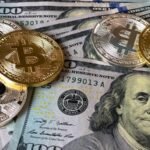Due to the ongoing impact of higher deposit costs, major U.S. banks are anticipated to report lower earnings in their financial reports for the third quarter.
These expenses may decrease in subsequent quarters as a result of the Fed’s interest rate cut and the possibility of additional cuts. In 2022, the Fed’s rate hikes enabled banks to increase loan rates and expand their net interest income (NII), which is the primary driver of profitability for the majority of lenders. The Fed’s benchmark rate is currently 4.75-5%, but it projects that its median rate may decrease to 3.4% by the end of 2025 and to 2.9% in 2026.1 However, loan growth has stalled while deposit costs have increased sequentially in recent quarters.
Analysts anticipate that bank earnings will rise significantly beginning next year and that deposit costs will begin to decrease in the current fourth quarter. MarketWatch reported that analysts at Keefe, Bruyette & Woods expect industry-wide profits to rise by 8% in 2025 and another 12% in 2026.2 Here is a closer look at what to anticipate when large U.S. banks report third-quarter results.
Revenue before interest
Net interest income for the majority of large banks is likely to have decreased both sequentially and year-over-year, as estimated by Visible Alpha.
Goldman Sachs (GS) and Bank of America (BAC) are exceptions. Despite a 4% decrease from last year, consensus projections show that Bank of America’s NII will rise by 1% from the second quarter. NII probably increased year-over-year for Goldman Sachs, but it decreased from the previous quarter.
Wells Fargo (WFC) is anticipated to report a NII decrease of approximately 9% from the third quarter of last year, marking the sixth consecutive quarterly decline. The blame lies with rising deposit costs.
The difficulty of securing funds in the industry is exemplified by JPMorgan Chase (JPM), the largest bank. It had to pay a lot more to keep its deposits, even though they probably fell for the second quarter in a row and remained flat year over year. Deposit interest rates have increased by two-thirds over the past 18 months and are currently at an estimated 18% higher than they were a year ago.
Loans and How to Get Paid Back
The majority of the year, consumer spending was the engine of the economy. However, over the past few months, it appears to have slowed down, raising concerns about the financial well-being of consumers.
In their earnings commentary for the second quarter, banks acknowledged this concern as consumer credit card debt grew and more people fell behind on loan payments. High interest rates not only made it harder for people to pay back existing debts, but they also discouraged new loan applications.
In the third quarter, both sequentially and year-over-year, loan growth estimates remained relatively stable at most large banks. At 4%, Citigroup (C) probably had the highest loan growth among large banks from the third quarter of last year, which was flat from the previous quarter.
In the meantime, allowances for potential loan losses and charge-offs for existing bad loans increased sequentially, putting profits under additional pressure. According to estimates provided by Visible Alpha, charge-offs increased by an average of 55% across JPMorgan, Citigroup, Bank of America, and Wells Fargo in comparison to a year ago.
Investment banking and asset management
The majority of banks have seen an increase in wealth management fees as a result of rising stock and bond markets and expectations of a Fed rate cut. Investors may, however, place a greater emphasis on the state of the economy as a result of the Fed’s recent rate cuts. Financial markets and wealth management fees may decline if the economy slows more than anticipated.
Bank of America keeps having high hopes. It recently stated that it continues to “peg the highest probability on a soft-landing” for the U.S. economy3. On the other hand, a continued lack of interest in mergers and acquisitions (M&A) is reflected in lower expected investment banking revenue at most banks. Goldman Sachs is anticipated to report higher earnings, primarily as a result of lower depreciation expenses and rising commission fees. In August, deal volume in the United States fell to its lowest level for the year, down 22% from July. However, the Fed’s rate cuts could encourage more mergers and acquisitions in the future, which could result in an increase in investment banking revenue in subsequent quarters.










